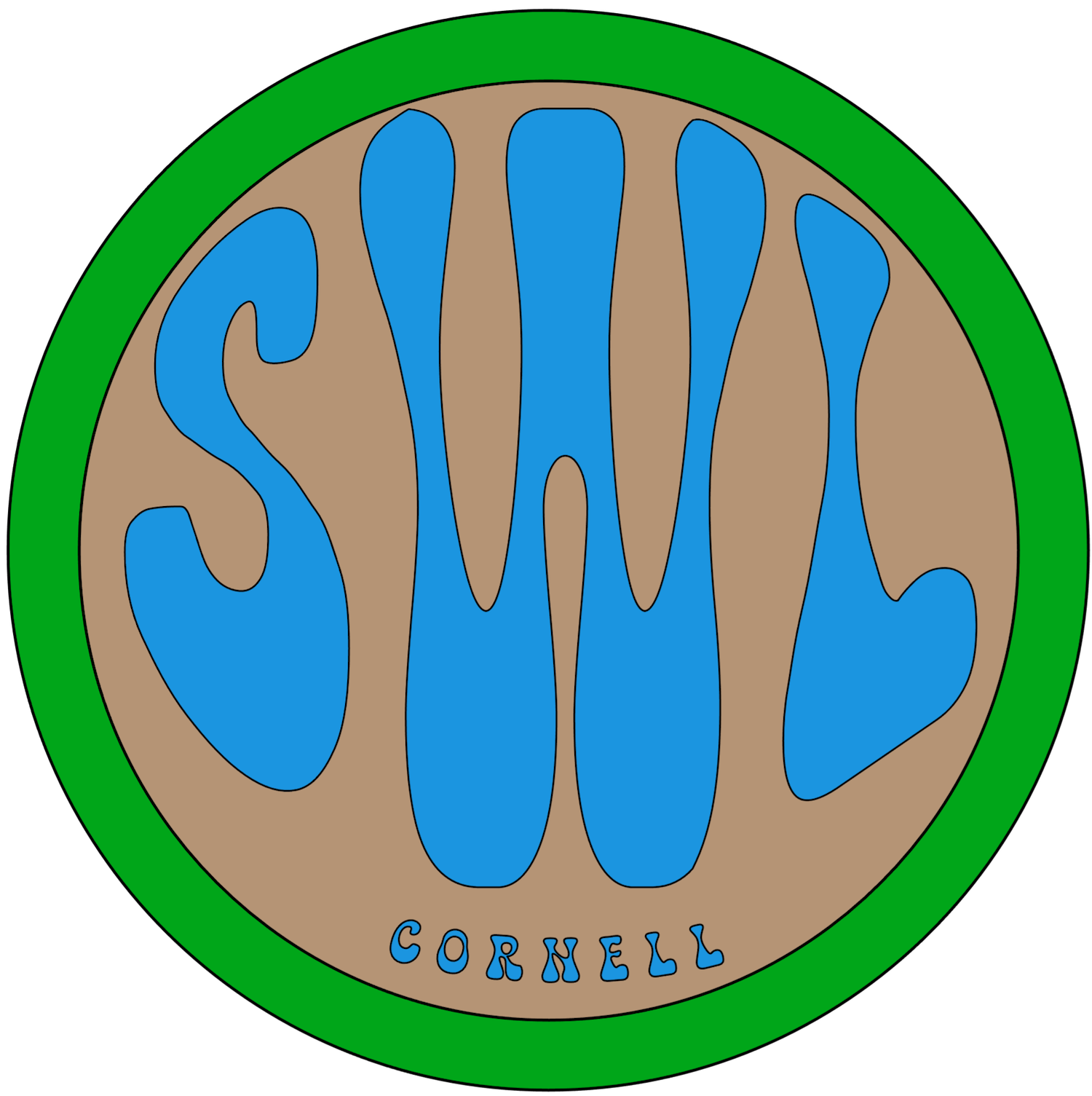Glyphosate - Sites
Our glyphosate pages: Overview | Sites | Experiments | Methods
Cornell Recreation Connection (CRC)
We established this site for biofuel cropping research in 2011. Most of our early work was about greenhouse gas emissions and crop yields from this economically marginal land. Spring wetness due to the poorly drained soil and flat terrain is a major reason for the marginality. The land had not been cropped for over 50 years. The only notable maintenance done over that time was to prevent the land from returning to forest, which is the predominant fate of retired upstate NY farmland. We installed tile drains to improve the rate that water exits from the site after a storm or snowmelt event.
The site is divided into 18 plots named A through R, and all plots host perennial grasses. Three plots were preserved in the site’s prior “weed” mixture. All of the other plots were plowed once when establishing their first biofuel crop and never since. With no cultivation, weed control is chemical — glyphosate is sprayed in the spring in most years after early season weeds emerge and before the biofuel crop re-emerges.
Most of the site is a single, 7-hectare watershed draining to the south (see map below). There is only about six meters of elevation difference across the site. Standing at the exit weir, it is possible to see the entire watershed.
In spring 2014 we did our first sampling for glyphosate at the CRC site, to rehearse sample collection with an autosampler (drawing on our experience with autosampling for phosphorus). We subsequently sampled there each spring 2015 through 2019 and in fall 2016.

__________
Freese Road GMO Cornfields
Starting in 2017, we began to monitor runoff exiting other Cornell-owned farm fields in the Ithaca vicinity. We took a few grab samples in Spring 2017 at the downhill base of a field hosting GMO corn along Hanshaw Road west of the CRC site. In 2018 the operators of the next fields west along Hanshaw, at the intersection of Freese Road, grew GMO corn and sprayed fields with glyphosate and other herbicides. The operators notified us of the 2018 spray date in time to deploy an autosampler.
The Freese site has only begun to be characterized hydrologically; see map below. The delineation of subwatershed ridges and swales is based on a 2008 LIDAR image and there may be some difference in actual 2018 flow directions at the south. The map shows the maximum possible watershed of the 2018 sampling point (lower right); this is about 9 hectares. One northernmost sub-basin is enclosed and water from there may accumulate to a level where it flows (overland or via subsurface) to the next sub-basin to the south. The next sub-basin (heading southward) slopes to a south central point where there is sometimes ponded water and a tile drain entrance. So far we have not found the exit of that drain. The next field to the south of the drain entrance is downhill, constituting our Core sampled sub-basin. The Core sub-basin definitely drains to the best sampling point. In 2018 the next sub-basin to the west, over twice the size of the Core sub-basin, had its earlier outlet blocked and water ponded at the southern edge. The pond overflowed eastward to the sampling point of the Core sub-basin. The Core sub-basin and western sub-basin amount to about 5 hectares and the upper two sub-basins amount to about 4 hectares.
In 2018 all of the four-part watershed except the central green area on the photo was cropped with GMO corn and sprayed with glyphosate. The central green area was fallow.
There is an important seasonality difference from the CRC site when a glyphosate-resistant crop is involved, since the crop and weeds can be allowed to develop before spraying. In 2018 the Freese site was planted late then sprayed almost two months after the CRC site’s late April spray. If the Freese Road site grows GMO corn again in 2019, we hope to sample there again and to improve understanding of the hydrologic regime. The latter will involve tracing the exit drain from the upper two watersheds and installing a flow measurement device near the sampling point.


